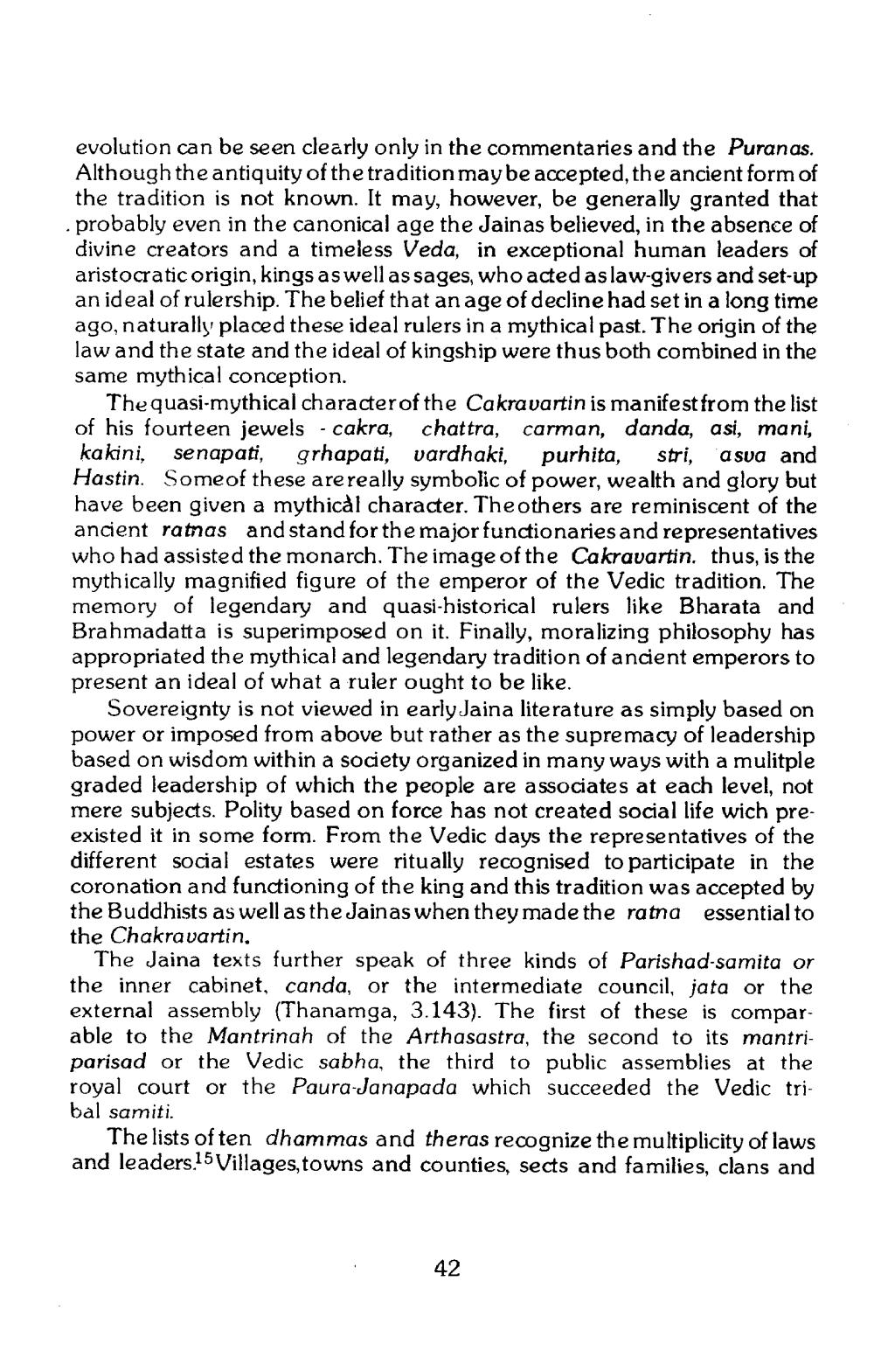________________
evolution can be seen clearly only in the commentaries and the Puranas. Although the antiquity of the tradition may be accepted, the ancient form of the tradition is not known. It may, however, be generally granted that . probably even in the canonical age the Jainas believed, in the absence of divine creators and a timeless Veda, in exceptional human leaders of aristocratic origin, kings as well as sages, who acted as law-givers and set-up an ideal of rulership. The belief that an age of decline had set in a long time ago, naturally placed these ideal rulers in a mythical past. The origin of the law and the state and the ideal of kingship were thus both combined in the same mythical conception.
The quasi-mythical characterof the Cakravartin is manifest from the list of his fourteen jewels - cakra, chattra, carman, danda, asi, mani, kakini, senapati, grhapati, vardhaki, purhita, stri, a sva and Hastin. Someof these are really symbolic of power, wealth and glory but have been given a mythical character. The others are reminiscent of the ancient rathas and stand for the major functionaries and representatives who had assisted the monarch. The image of the Cakravartin, thus, is the mythically magnified figure of the emperor of the Vedic tradition. The memory of legendary and quasi-historical rulers like Bharata and Brahmadatta is superimposed on it. Finally, moralizing philosophy has appropriated the mythical and legendary tradition of ancient emperors to present an ideal of what a ruler ought to be like.
Sovereignty is not viewed in early Jaina literature as simply based on power or imposed from above but rather as the supremacy of leadership based on wisdom within a society organized in many ways with a mulitple graded leadership of which the people are associates at each level, not mere subjects. Polity based on force has not created social life wich preexisted it in some form. From the Vedic days the representatives of the different social estates were ritually recognised to participate in the coronation and functioning of the king and this tradition was accepted by the Buddhists as well as the Jainas when they made the ratna essential to the Chakravartin, The Jaina texts further speak of three kinds of Parishad-samita or
inner cabinet, canda, or the intermediate council, jata or the external assembly (Thanamga, 3.143). The first of these is comparable to the Mantrinah of the Arthasastra, the second to its mantriparisad or the Vedic sabha, the third to public assemblies at the royal court or the Paura-Janapada which succeeded the Vedic tribal samiti.
The lists of ten dhammas and theras recognize the multiplicity of laws and leaders.15 Villages, towns and counties, sects and families, clans and
.:
42




